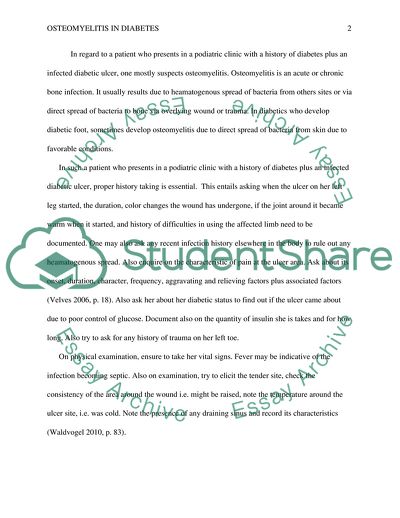SCENARIO (A 60 yr-old lady patient presents in a podiatric clinic with Essay. https://studentshare.org/medical-science/1760429-the-diabetes-plus-an-infected-diabetic-ulcer
SCENARIO (A 60 Yr-Old Lady Patient Presents in a Podiatric Clinic With Essay. https://studentshare.org/medical-science/1760429-the-diabetes-plus-an-infected-diabetic-ulcer.


